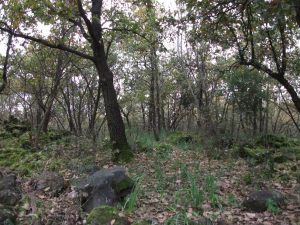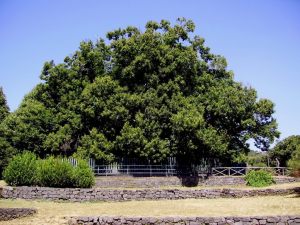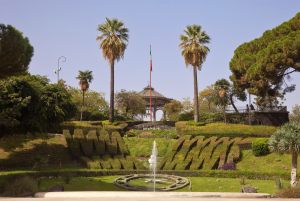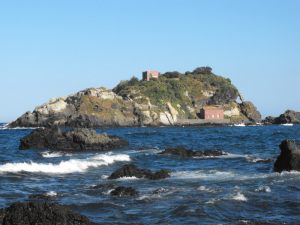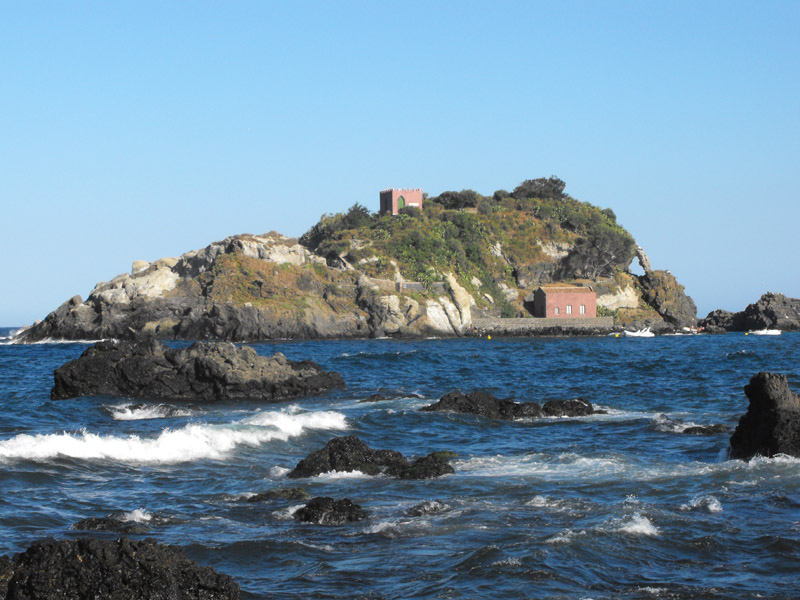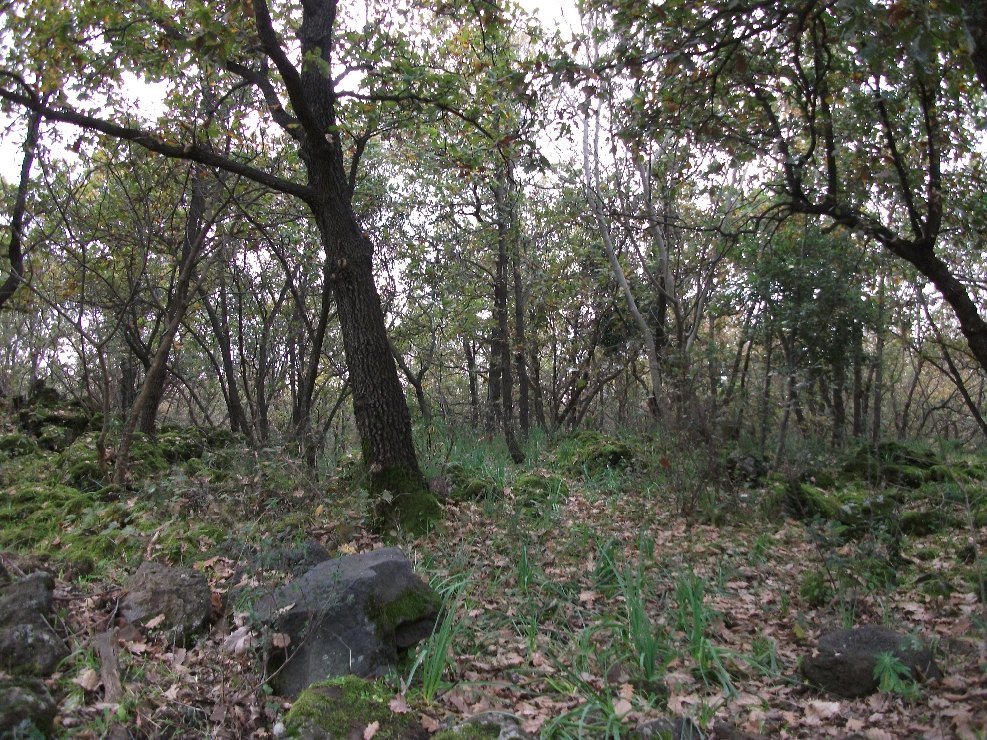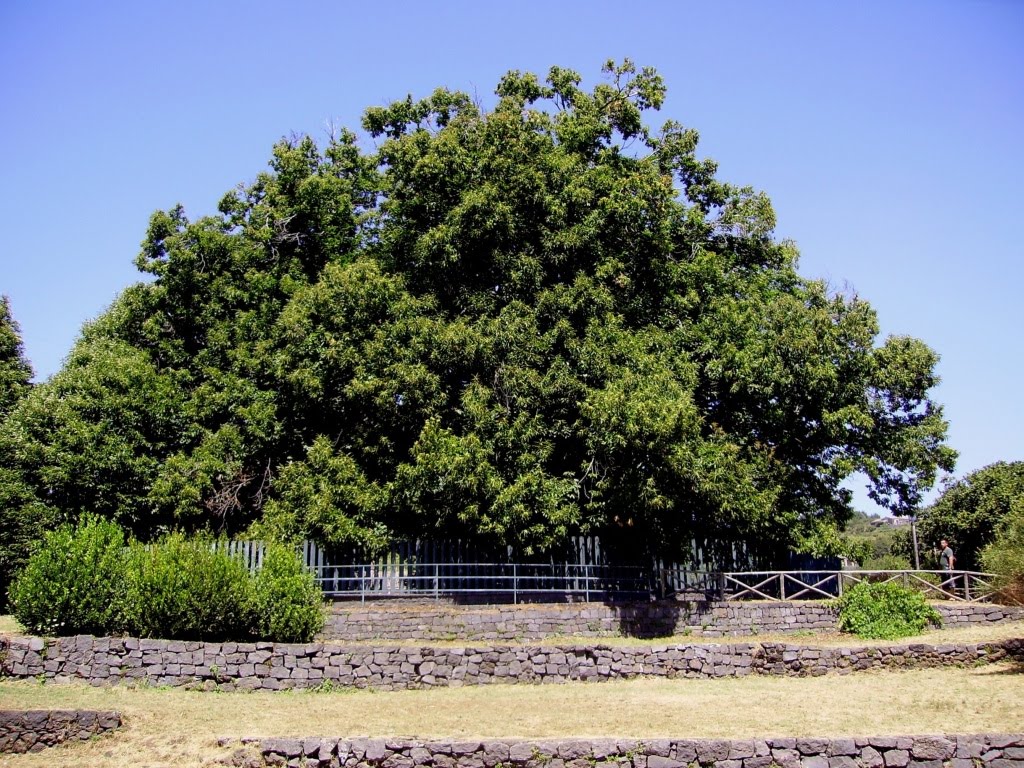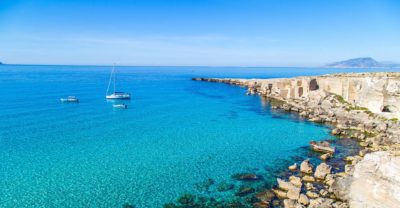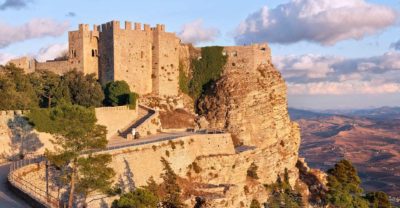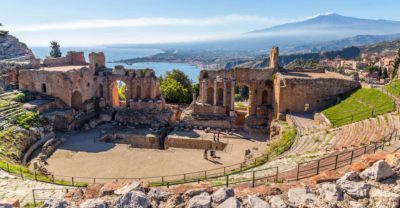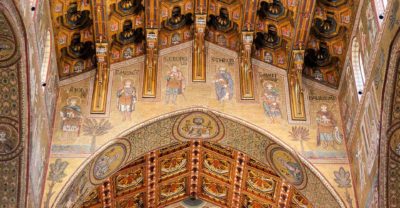Nature tourism
Catania
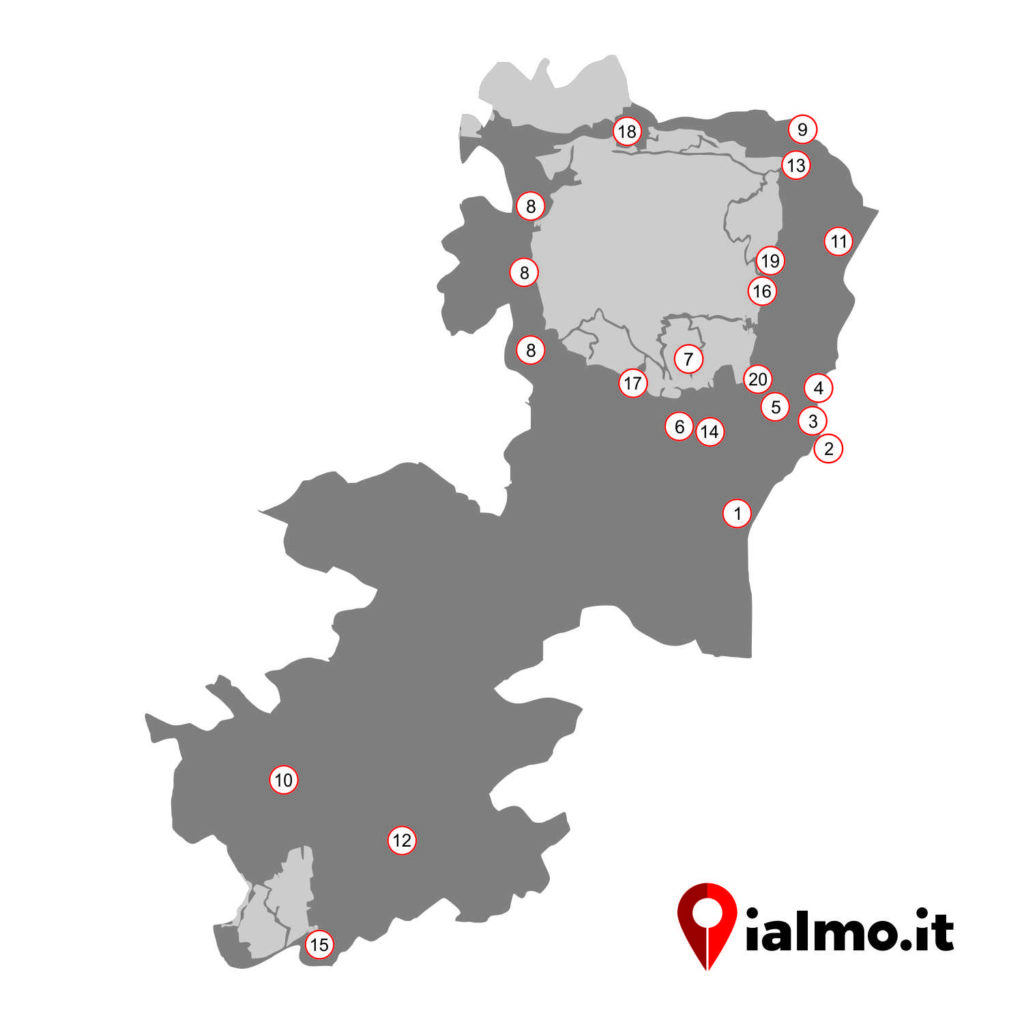
Giardino Bellini, Catania: known to the Catania as Villa Bellini, it is one of the oldest parks in the city. Today’s structure incorporates a part of the lands owned by the Baron of Biscari Ignazio Paternò Castello and defined by him as “The Labyrinth” because they replicated the composition of a labyrinth with high hedges, dead ends and fountains. In 1854 it became a municipal property, after the sale to the city by an heir of the Castello family. As the garden expanded, thanks to the acquisition, by the administration, of the adjoining land until the definitive configuration in 1883, with the name of Giardino Bellini in honor of the composer from Catania, where there is a marble bust inside the area. The garden became the walk of the population, who went there in search of coolness in the hot catanese summers, or to enjoy musical performances. Since the seventies the garden underwent a period of decline until the disappearance of flowers and plants and the death of the animals that were in the zoo housed inside. In 2007 the restoration and environmental restoration work began, completed in 2010. Today the garden presents a dense vegetation, rich in species of subtropical origin that are well suited to the particularly sultry climate of the summer season. There are many statues that meet along the path of the so-called “Avenue of the Illustrious Men”: monuments dedicated to Luigi Capuana, Giovanni Verga, Nino Martoglio and to all the prominent personalities who frequented the city. Among the other urban parks worth mentioning in Catania, we mention the Gioeni Park, the Pacini Garden and the Falcone Park.
Integrated nature reserve Isola Lachea, Aci Castello: Known in the Homeric narration as “Isola delle Capre”, the Isola Lachea is a small island not far from the coasts of Aci Castello. The island is part of the archipelago of the Ciclopi, is also of lava nature and has been the site of archaeological discoveries such as amphorae, furnishings and weapons from prehistoric times, as well as two tombs set in the rock. A characteristic of the island is the Grotta del Monaco, the niche that housed, around the year 1000, a monk who had retired in solitary. The islet is very rich in vegetation belonging mainly to the Mediterranean and typical local fauna. Particularly noteworthy are two species of indigenous spiders and a lizard belonging to the Podarcis Sicula Ciclopica family, the only example in Italy. The whole area is a protected natural area since the late nineties and is entrusted to the department of the Faculty of Biology of the University of Catania. It is home to a museum that houses fish and natural species.
Path of the old water mills, Aci Catena: this is the area comprising the ancient mills where the large quantity of water present in the area was worked, coming from the Cuba sources and channeled through the Casalotto aqueduct that supplied it to all the neighboring countries; this water was used above all for irrigation of citrus groves. This area in the fifteenth century was the headquarters of the Fiera Franca di Santa Venera, a market without duty, a rare event for those times. The path winds along the main Saia (gully) through which you reach the first mill, called Spezzacoddu (because it was guarded, at the time, by a guardian with a lot of despotic ways). Next to this, the Npacchiapa mill, which for a long time was home to a school for farmers. Both mills are located in the area called Piana della Reitana which has been the site of archaeological finds of a certain importance. From the Reitana the path turns towards the Pescheria Plan, home to springs and other mills. Among the still active and visible sources are: Pescheria, Spanneddi and Paratore. The excavations carried out in the adjacent countryside have brought to light the remains of a Roman villa and the Mosaico del Pegaso. Here is located the third mill, Scardaci, also called Dâ zia Nedda, which has a very impressive scenery with springs, waterfalls, typical vegetation of the place (such as the papyrus) and aquatic fauna such as eels, frogs and crabs. Next to the mill you can see the Fondaco, a deposit with the function of night shelter for the farmers. The fourth mill is U mulinu â via, also called Don Neddu, with its characteristic red façade; from here we reach the fifth mill, Don Pippino, and gradually the other mills are now homes for private homes. Not far away you can see the last still active source, that is the one called Mutaddisa.
Timpa Reserve, Acireale: Characterized by the presence of massive volcanic rocks and a dense vegetation, the territory of the Timpa Reserve is spread over a strip of land that runs parallel and close to the coast for about 6 km and that goes from the Path of the Great Waters (Acquaranni) in the hamlet of Capo Mulini up to the foot of the hamlet of Santa Maria degli Ammalati. In particular, the Great Water Path includes the descent towards the sea through a naturalistic path full of interesting specimens of vegetation and geological elements characteristic of the area. At the end of the walk you reach the beach where there is the source that gives the place its name (ranni = big, because a very abundant time). Another path that crosses the Reserve is that of the Chiazzette. Called “Chiazzette” because it includes seven hairpin bends or small squares before arriving in the seaside village of Santa Maria La Scala, it is one of the less impervious paths within the Reserve and offers a breathtaking view over the coast. From the first square you can admire the Fortress del Tocco, a bastion built in 1600 for the defense of the city from the invasion of the barbarians. Also interesting along the way is the small chapel dedicated to the SS. Crucifix of the Good New.
Bosco di Aci, Aci Sant’Antonio: a place for the protection of the European Union as S.I.C., or Site of Community Importance, is a very important public green area of great naturalistic interest. It is the last site of the Etnean foothills to present a significant extension and environmental continuity and represents the only surviving portion of a much larger area that included large areas of Acireale, Aci Catena, Aci Bonaccorsi, Viagrande, Aci Sant’Antonio Mascali, Giarre, Riposto and Zafferana Etnea. Quoted by the Latins as Lucus Jovis (ie sacred wood to Jupiter), from the 18th century it was divided and sold. It preserves an important vegetative variety composed of oaks, chestnuts, Turkey oaks, laurel, pistachio, bagolaro, holm oak, olive, lentisks, euphorbia, wild rose and broom.
Etnaland, Belpasso: Located a few kilometers from Belpasso, it is one of the largest and most visited amusement parks in Southern Italy. A very large area at the foot of Mount Etna houses this beautiful park surrounded by greenery and made even more spectacular by the presence of lava rocks, tunnels, caves and waterfalls. The park consists of three different themed areas: the prehistory park where you can watch the reproductions of dinosaurs, mammoths and families of primitive men for a real dip into the past; the water park with slides, pools and adrenaline attractions for young people, families and children; the new amusement park full of many attractions that offer guests the opportunity to spend a whole day of fun in the open air. Inside Etnaland there are several refreshment points for a snack or a complete meal between one attraction and another.
Etna Park, access from Adrano, Biancavilla, Belpasso, Castiglione di Sicilia, Linguaglossa, Milo, Nicolosi, Pedara, Ragalna, Sant’Alfio, Trecastagni, Zafferana Etnea: Established in March 1987, the Etna Park has a extension of almost 60 hectares and covers the territory of as many as 20 municipalities in the province of Catania. By virtue of the presence of Etna, the highest volcano in Europe included on June 21, 2013 among UNESCO’s natural heritage sites, the Park is characterized by a rich variety of environments that alternates urban landscapes, thick forests and desolate areas covered by magmatic rock and periodically subject to high altitude snowfall. On some slopes of the volcano, around 2,000 meters, it is possible to admire the loricato pine, the betula aetnensis and the beech while descending to the altitude you can also find the chestnut, the olive tree and the Etna broom. On the volcano live the porcupine, the fox, the wild cat, the marten, the rabbit, the hare, the weasel, the hedgehog, the dormouse, the dormouse, various species of mouse, bat and snake. In particular, we highlight the path 786 which was designed and built by the Belpasso section of the Italian Alpine Club thanks to the contribution of the municipality of Belpasso. The path winds for a length of 15 km and allows you to visit the most evocative places of the town such as the Sanctuary of the Madonna della Roccia, the Grotta del Piscitello, and the Cisterna Regina.
Pietralunga stretch of the Simeto River: the Ministry of the Environment, in 2000, inserts the territory of the Pietralunga Tract of the Simeto River in the list of Sites of Community Interest having as its objective the conservation of natural and semi-natural habitats, as well as the flora and wildlife of the place. In 2005, the Sicilian Region acknowledges the Decree of the Ministry of the Environment of 2000, issuing a formal provision. The Pietralunga Tract of the Simeto River includes a territory of 675.00 hectares falling within the municipalities of Biancavilla, Paternò and Centuripe: from Ponte La Barca to the Malastalla district. Not far from the site have been defined three other areas of community interest geographically close to and correlated with it: Le lava laviche del Simeto; the Poggio Santa Maria; the Contrada avalanche. On the site there is a dense shrub with white willow (Salix alba), red willow (Salix purpurea) and black poplar (Populus nigra), often rendered impenetrable for the development of lianose species such as the bramble (Rubus ulmifolius) or the vitalba ( Clematis vitalba); this occurs especially in the stretches where the structure is of a low shrub type following cuts or fires. In these scrublands there is another interesting species of willow, the willow of Gussone, endemic to the watercourses of north-eastern Sicily. In the stretches closest to the water the ripisilve are replaced by marsh formations such as reeds and typhus. The most elevated alluvial terraces are occupied by tamaricetes with greater tamarisk (Tamarix africana), tamarice gallica (Tamarix gallica), oleander (Nerium oleander) and Ginestra odorosa (Spartium junceum) and by the low glareicola glareicola with italic elicriso (Helychrysum italicum) and from large areas to riparian forest and reed beds. In this environment we can observe species particularly linked to the fl uvial environments among which, as regards the avifauna, the coot (Fulica atra), the moorhen (Gallinula chloropus), some species of ducks, the nightingale (Luscinia megarhynchos) ), the Kingfisher (Alcedo atthis) and the White Dancer (Motacilla alba). There are also amphibians, the green frog (Rana lessonae) and the common toad (Bufo bufo), while among the reptiles are common Biacco (Coluber viridi fl avus) and Natrice (Natrix natrix). You can reach the site by taking the national road 121 from Catania. After passing the town of Paternò, before the abandoned Schettino railway station, take the provincial road for Ponte La Barca, which runs along the river. Or, exiting at the Gerbini motorway junction (Catania-Palermo A19), continuing to Paternò along the SP77 provincial road.
Forts lava of Simeto, Bronte-Randazzo-Adrano-Centuripe: The lava Forts of the Simeto comprise a territory of 1,217 hectares between the municipalities of Bronte, Randazzo, Adrano and Centuripe. The gorges have walls of varying height between 5 and 15 meters and have been excavated by the Simeto river in the basalt formed following lava flows coming from Etna. They present a great landscape and geomorphological interest due to the characteristic geometry of the basaltic prisms and because they constitute the contact between sedimentary rocks and Etna lava. In 2000 the Ministry of the Environment entered the territory of the Simeto lava Forts into the list of SCI (Sites of Community Interest), the so-called Natura 2000 sites, with the aim of conserving and protecting natural and semi-natural habitats, as well as the wild flora and fauna of the place.
Alcantara Fluvial Park, Calatabiano-Castiglione di Sicilia: the area includes the course of the Alcantara river that from its source in the Nebrodi mountains crosses several municipalities to the mouth of the Calatabiano seafront, in San Marco. On the border with the town of Motta Camastra (ME) it is possible to visit the Alcantara Gorges, a splendid naturalistic spectacle designed by the river that flows through a canyon made of lava stone, lakes and waterfalls to the sea. Characteristic is the temperature of the water, so cold in some places that it can only be crossed with special suits to be rented on site.
Bosco di Santo Pietro nature reserve, Caltagirone: The Bosco di Santo Pietro nature reserve covers an area of about 6,560 hectares. From 390 meters above sea level it slopes gently towards the plain of Vittoria and is bordered to the west and north by the Terrana and Ogliastro valleys, to the east by the Ficuzza torrent and to the south by the boundaries of the Acate municipality. The first historical testimony of the wood dates back to 1160, when the Norman king Ruggero d’Altavilla granted him to the “calatini” as a reward for his help against the Saracens. The repeated fires, the lack of maintenance, the illegal pastures and the poaching, have upset the original appearance, however, in some places, the density of the vegetation is such as to revive in the visitor the charm of the ancient forest. Over 300 species of plants are particularly rich in the undergrowth. In the Molara district, a specimen of a quercus suber that is 6.2 meters long is still on display today. We also find the holm oak (quercus ilex) that extends for some tens of hectares, the spiny oak (quercus coccifera), the oak (quercus pubescens) and the carob tree (ceratonia siliqua). In the garigue, the dominant species are rosemary (rosmarinus officinalis), thyme (thymus capitatus), heather (erica multiflora) and lentisk (pistacia lentiscus). During walks in the woods often meet with porcupines, hares, wild rabbits and weasels. The wild cat and the fox are also present. Among the birds we can observe ninety-six different species including the titmouse, the eye-catcher, the jay and also some rare species such as the great spotted woodpecker, the pendolino and the kestrel, called in the dialect “muschittu”. In 1999 the Oriented Nature Reserve was set up to stem the degradation and protect the territory.
Fiumefreddo Nature Reserve, Fiumefreddo di Sicilia-Calatabiano: the Reserve was created with the aim of preserving the species of flora and fauna typical of the area along the river banks. It is divided into two parts: an integral reserve, which surrounds the river part, and a pre-reserve consisting of lake areas where agricultural cultivation is allowed. The area is rich in vegetation, with specimens of white poplars, willows and beautiful papyrus elements scattered along the river. The area is populated by the moorhen, nightingales and freshwater eels.
Lake Dirillo, Licodia Eubea: small artificial lake very popular for outings and fishing. It is equipped with sports equipment for rowing and inhabited by several lacustrine species, as well as a variety of Mediterranean flora.
Piano Provenzana, Linguaglossa: the Piano Provenzana ski resort is located on the north side of Mount Etna, at an altitude of over 1,800 meters above sea level. At the station you arrive along the Mareneve road of Linguaglossa, from which you first reach the pine forest of Linguaglossa, then Piano Provenzana and from here you can finally reach the summit craters of Etna. Immersed in a large pine forest, the station has the appearance of an alpine landscape with the addition of the view of the Ionian Sea and the Strait of Messina to the north. The resort has 4 slopes for skiing, cross-country skiing, ski touring and snowboarding. There are also two slalom slopes served by two ski lifts, cross-country ski trails and other winter sports. The area has been overwhelmed several times by volcano eruptions; the last in chronological order, in 2002, has completely covered the tourist facilities in the area that have been then reorganized, reopened and are frequented by tourists and snow lovers.
Monte Ceraulo Nature Park, Mascalucia: it is a protected natural area, equipped for hiking, with enchanted itineraries; between oaks and holm oaks, where there are different species, including plants and animals, which live only in these places, starting from the rare Orussus Taorminensis, which make these places also scientifically unique. The Monte Ceraulo Park, born from the overlap of several lava flows, covers 17 hectares, at an average height of 520 meters above sea level. Inside the park you can visit the Grotta dell’ermita, a natural cave where, from the twenties of the twentieth century and for many years, lived between Graziano, hermit and representative of the Franciscan order, who dedicated himself to the contemplative life and ascetic. This park, strongly desired by the administration of Mascalucia, also performs an important educational function, is in fact a destination for school children to discover the nature and environments typical of the south side of the volcano.
Suburban Park Sciri Sottano, Mazzarrone: falls in the eastern part of the territory, is 500 m from the city center and borders to the north with the territory of the municipality of Caltagirone. The internal area consists of a plateau in which eucalyptus are present, in the perimeter area there are slopes, rich in Mediterranean vegetation, that descend down to the valley towards the streams. The undergrowth contains asparagus, rosemary, thyme and ferns. The holm oak, the wild olive tree, the dwarf palm, the elderberry, the prickly pear, the horse tail and the stracciabraghe are also widespread. Among the animal species we remember the hare, the porcupine, the wild rabbit, the hedgehog, the fox; among the reptiles the tortoise, the lizard, the lizard, the collared snake and the viper; amphibians including the salamander and birds such as the robin, the quail, the blackbird, the tawny owl, the kestrel and the cuckoo. Present the butterflies such as saturnia.
Etna Adventure Park, Milo: located within the forest area of Parco Scarbaglio, the Etna Adventure Park is one of the largest outdoor areas of nature trails and games on the trees of the South. Noteworthy in Milo: the Botanical Park, the Fontanelle Path, the Sartorius Mountains, Mount Rinatu and the Cuban Pine Forest, a dense forest area of vegetation that culminates near the Rifugio Citelli. We end our review with the so-called “Grande Nivera”, the area where once the snow was stored in the winter, covering it with foliage and dry branches, so you can resell it. The advent of the refrigerator, in the fifties, decreed the end of this activity, but the area is still a place of visit for its floral species and lava flows deposited there.
Botanical Garden Nuova Gussonea, Ragalna: established in 1979 through an agreement between the Directorate General of Forests of the Sicily Region and the University of Catania, was inaugurated in 1981. The structure houses all the ecosystems that have been discovered on Etna , including the most extreme, typical of high altitudes.
Grotta del Gelo, Randazzo: it is a cave of Etna located at 2030 meters of altitude, inside it is recorded the presence of perennial ice. It has an opening and a conical shape, since the seventies is a destination for hikers and tourists as well as experts and scientists. The Cave of Frost is a sliding tunnel, originating from the cooling of a lava flow linked to an eruption that began in July 1614 and lasted for over ten years. After five hours of walking, in summer the cave is easily accessible, while in winter its entrance is often hidden by snow.
Castagno dei Cento Cavalli, Sant’Alfio: Castagno dei Cento Cavalli is a multi-millennial tree nestled in the Etna Park. It is believed that its age is between 3600 and 4000 years and is one of the most long-lived chestnut specimens in Europe. It is said that a Queen, accompanied by a hundred knights and ladies, was surprised by a storm, during a hunt, near the tree and right under the branches found shelter with all the numerous following. The storm continued until evening, so the queen passed under the leaves of the chestnut tree the night in the company, it is said, of one or more lovers among the knights in her suite. Some poets sang the story of chestnut and queen, among which we mention Giuseppe Borrello, Giuseppe Villaroel and Carlo Parini. The chestnut has been portrayed by some travelers on the Grand Tour, including Patrick Brydone and Jean Houel. Between September 28th and October 1st 2006 the International Conference entitled “UNESCO and the Protection of Environmental Heritage for Sustainable Development: Il Castagno dei Cento cavalli” took place in Sant’Alfio, which ended with the election of the tree to “Monument Messaggero di pace”.
Monte Serra, Viagrande: Partly inserted into the Etna Park, the territory of the municipality of Viagrande is characterized by the mild hills that are also made up of ancient overlapping lava flows and softened by the long and constant action of atmospheric agents. To complete the harmony of the foothills landscape are the numerous “convent adventitives”, small volcanic buildings including that of Monte Serra, now re-evaluated for its beauty and equipped to park. Monte Serra presents the characteristic horseshoe shape due to the collapse of the summit of the crater and a flank of the volcanic cone. The staircase consists of about 350 steps made strictly of lava stone, is the most direct way to reach the summit and step by step, the visible landscape increases: Etna, neighboring municipalities, the sea, the Gulf of Augusta. Still to be noted on Monte Serra the Butterfly House, an aviary with tropical plants and flowers that houses the most beautiful butterflies in the world. These beautiful lepidoptera are observed undisturbed at close range. The visit includes an interesting lesson on the world of insects and the biology of butterflies. Other interesting invertebrates of tropical forests such as stick insects, leaf insects and giant beetles are housed in the aviary.
